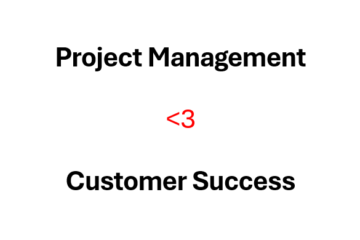Drawing Inspiration from Fault Tolerance for Team Building

Successful leaders bring together individuals with diverse talents to achieve a common goal. In my view, one principle that resonates strongly with effective team management is building resilience- being able to navigate challenges, adapt to setbacks, and thrive in dynamic work environments. In this post, I explore how the concept of fault tolerance can inspire cultivating resilient teams capable of overcoming obstacles and achieving extraordinary results. A bold concept? Keep reading to find out!
What is Fault Tolerance?
If you are familiar with the concept of fault tolerance, skip this section.
Fault tolerance is a fundamental concept in cloud management, encompassing the ability of systems to withstand faults and continue operating seamlessly. While there is undoubtedly a rich historical background to fault tolerance, my understanding primarily revolves around constructing fault-tolerant systems, leveraging microservices, and utilizing fault-tolerant cloud services. You may have come across the popular GIF below that humorously captures the essence of fault tolerance.
Fault tolerance is the capacity of a system to keep running and providing services, despite the presence of faults or failures. As the dog in the above gif is sitting in a fault-tolerant piece of the system, he is confident of everything will be fine. Cloud computing depends on fault tolerance to guarantee high reliability and availability of resources and services. A fault-tolerant system is engineered to monitor, reduce, and recover from faults in order to minimize the effects on users and assure unbroken service. The thought of an analogy to compare fault tolerance in cloud services and its use case in team building has been on my mind lately hence writing this post today. I hope to share some of the thoughts and insights I had after reflecting on this topic.
Question: how leaders can build fault-tolerant teams?
- Embracing Skill Diversity: Just as fault-tolerant systems benefit from redundancy, I believe in fostering skill diversity within teams. Encouraging cross-training and knowledge-sharing ensures that team members are equipped to support each other when needed. By embracing skill diversity, create a safety net that minimizes the impact of individual weaknesses or absences, making the team more resilient and adaptable.
- Fostering Open Communication and Collaboration: Clear and open lines of communication are the lifeblood of any successful team. Make it a priority to foster an environment where team members feel comfortable expressing concerns, sharing ideas, and addressing potential issues before they escalate. By encouraging collaboration, we tap into the collective intelligence of the team, ensuring that everyone is aligned, working towards the same objectives, and ready to assist one another when unexpected challenges arise.
- Proactive Monitoring and Constructive Feedback: Similar to how fault-tolerant systems employ monitoring mechanisms, actively monitor and provide feedback to my team members. Regular check-ins, performance evaluations, and constructive feedback allow me to identify potential issues early on and provide timely guidance. This approach ensures that we spot areas for improvement, address conflicts, and guide team members toward individual and collective growth.
- Cultivating Adaptability and Resilience: Resilient teams are adaptable and capable of navigating unexpected changes or setbacks with agility. Foster a culture that embraces adaptability, learning, and innovation. View setbacks as opportunities for growth and encourage creative problem-solving. By exploring alternative approaches and learning from each experience, you can cultivate a team that becomes more resilient and better equipped to handle future challenges.
- Empowering and Trusting Team Members: Strong leadership is crucial in both fault-tolerant systems and team management. I believe in empowering team members and promoting autonomy. Provide guidance and direction while also trusting their abilities to make decisions and take ownership of their work. When team members feel empowered, they become more proactive, resilient, and adaptable, driving the team’s success.
- Celebrating Success and Learning from Failure: Just as fault tolerance involves learning from failures to prevent future occurrences, recognize the importance of celebrating successes and embracing failures as learning experiences. Celebrate achievements as a team and reflect on setbacks, analyzing them to extract valuable lessons. By doing so, we promote continuous improvement and foster a culture of shared experiences, strengthening the team’s resilience.
Adopting the principles of fault tolerance can help build a resilient and high-performing team. By embracing skill diversity, fostering open communication, monitoring progress, cultivating adaptability, empowering team members, and promoting a culture of learning, leaders can create an environment where resilience thrives. As we navigate challenges and overcome obstacles, our team becomes stronger and better equipped to achieve success. Ultimately, the principles of fault tolerance inspire us to build teams that can weather any storm and achieve extraordinary results.



0 Comments